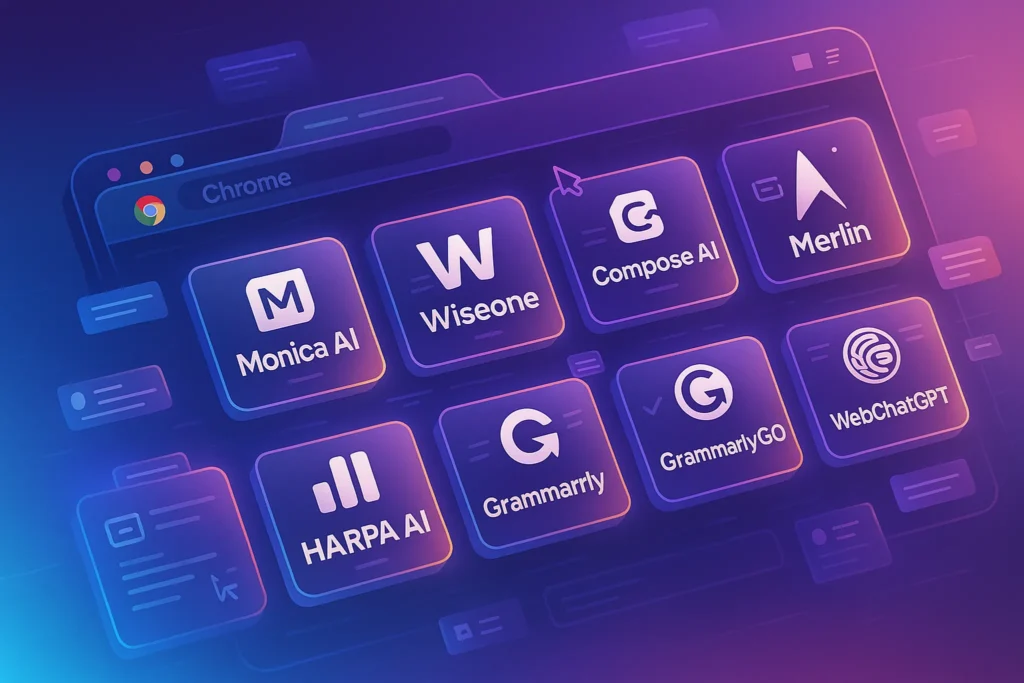💡 Introduction: Why Finance Apps Are More Than Just Budget Trackers
Managing money in 2025 doesn’t mean building complicated spreadsheets or manually tracking every dollar. Today’s personal finance apps are smarter, more connected, and designed for behavioral nudges. Whether you’re trying to build better savings habits, invest small amounts automatically, or get notified before your bills are due, there’s an app tailored for your financial goals.
The rise of automation in personal finance means you’re no longer relying on willpower alone. Smart tools handle everything from rounding up spare change to investing it or flagging when you’re about to overspend. In this guide, we’ll walk through the top personal finance apps that actually move the needle—especially when it comes to saving more and stressing less.
💰 Budget Tracking Apps
1. YNAB (You Need A Budget)
YNAB isn’t just a tracking tool—it’s a complete money management philosophy. Built around the idea of “giving every dollar a job,” this app helps you plan proactively rather than just react to spending. You’ll start thinking about next month’s expenses with this month’s income, which builds long-term stability.
✅ Ideal for: People who want total control over their cash flow
🧠 Why it works: It reframes your money mindset and encourages goal-driven budgeting
💬 Many users say YNAB helped them save thousands in their first year, simply by becoming aware of hidden patterns.
You can pair YNAB with broader productivity strategies like Time Blocking vs Task Batching to align financial priorities with your calendar.
2. PocketGuard
For those who want a more hands-off approach, PocketGuard tells you exactly how much is safe to spend after bills, subscriptions, and goals are accounted for. It connects to your bank, categorizes expenses, and helps identify recurring charges you might want to cancel.
✅ Ideal for: Casual users and younger savers
📱 Why it matters: Shows your “safe-to-spend” balance daily
It complements well with automation tools explored in Automating Personal Finances, especially when used alongside savings triggers or bill detection alerts.
📥 Auto-Saving Tools
3. Qapital
Qapital shines by automating savings through behavioral triggers. Want to save every time you buy coffee? Or every time your team wins a game? You can set “If this, then save X” rules using their Rule Builder.
✅ Ideal for: Habit-formers and visual learners
🧠 Why it works: Behavioral psychology meets banking; you don’t feel the pain of saving
It’s also a great companion to Best AI Personal Finance Apps to Manage Money Smarter for those using hybrid stacks of automation + AI advice.
4. Digit (Now part of Oportun)
Digit analyzes your income and spending patterns, then transfers small amounts of money into savings automatically—without you needing to lift a finger.
✅ Ideal for: People who struggle to save consistently
🔍 Why it helps: No need to decide how much to save—Digit does it for you
As covered in Free vs Paid Productivity Tools, Digit has a freemium model but really shines in the paid version with more savings goals and smarter automation.
📬 Want Weekly Money Tips from NerdChips?
Join our newsletter and get actionable insights on personal finance tools, saving hacks, and smart budgeting—delivered straight to your inbox.
🔐 No spam. No fluff. Just nerdy tools that work.
📊 Micro-Investing Platforms
5. Acorns
Acorns is the original “spare change” investing app. It rounds up your purchases to the nearest dollar and invests the difference into diversified portfolios. With Acorns Later, you can even set up retirement savings.
✅ Ideal for: Beginners entering the investing world
💵 Why it works: Turns passive spending into long-term investing
If you’ve read our post on Must-Have Productivity Apps, you’ll notice a trend: removing decision fatigue. Acorns does that by automating every investment decision.
6. Stash
Stash offers more customization than Acorns. You can pick individual stocks, ETFs, or automated portfolios. It’s great for those who want a little more control while still getting automation benefits.
✅ Ideal for: Users who want to start learning investing without high barriers
📊 Why it helps: Offers educational content + direct investing in fractional shares
It aligns well with more advanced automation strategies—like those in Top Zapier Automations Every Creator Needs—to trigger reminders or actions based on portfolio performance.
🔔 Bill Management & Alerts
7. Truebill (Now Rocket Money)
Truebill helps identify recurring subscriptions and bills, negotiates your rates (like cable or phone), and keeps you alert before overdraft or late payment hits.
✅ Ideal for: People who’ve lost track of all their subscriptions
⚙️ Why it works: Subscription cleanup + real-time notifications = savings
It’s a perfect follow-up tool after a budget reset—something we also touched on in Best Time Management Apps, where aligning schedules with billing cycles can prevent financial friction.
📈 Goal-Based Financial Planning
8. Monarch Money
Monarch Money takes a holistic approach. You can track net worth, plan for long-term goals (buying a home, having a baby), and even collaborate with a spouse or advisor.
✅ Ideal for: Couples and long-term planners
🎯 Why it works: Offers deep visibility and shared goal planning tools
It’s essentially a more accessible version of enterprise-level financial planning software, but designed with user experience in mind.
🧠 Smart Financial Assistant Tools
9. Cleo AI
Cleo is like budgeting with attitude. It uses AI to give smart insights, roast your bad spending habits, and even challenge you to weekly goals.
✅ Ideal for: Gen Z and Millennials who enjoy chatbot interactions
🤖 Why it helps: Adds humor and personality to finance tracking
As we discussed in How AI Is Transforming Productivity, AI with personality is much more engaging—and Cleo delivers exactly that.
10. Charlie AI (Retired, honorable mention)
While no longer active, Charlie was a much-loved tool that helped tens of thousands of users with friendly finance coaching. It’s a reminder that trust, UX, and tone matter just as much as features.
📊 Free vs Paid: Feature Comparison Table
| App | Free Version | Paid Version | Notable Benefit |
|---|---|---|---|
| YNAB | ❌ | ✅ | Best-in-class budgeting method |
| PocketGuard | ✅ | ✅ | Easy “safe-to-spend” visual |
| Qapital | ✅ | ✅ | Rule-based savings |
| Acorns | ✅ | ✅ | Round-up investing |
| Truebill | ✅ | ✅ | Subscription negotiation |
📊 Free vs Paid: Which Plan is Worth It?
| App | Free Plan Available | What You Get Free | Paid Features That Matter | Verdict |
|---|---|---|---|---|
| YNAB | ❌ Only Free Trial | 34-day full access | Full budgeting system + reports | 🟢 Worth It if you’re serious about budgeting |
| Qapital | ✅ Yes | Limited rules + manual goals | Automated savings, goal boosters | 🟡 Try free, upgrade for automation |
| Digit | ❌ Only Free Trial | Short trial only | Smart savings + overdraft protection | 🟢 Best for passive savers |
| Acorns | ❌ No | – | Round-ups, recurring investments | 🟢 Easy micro-investing for beginners |
| Truebill | ✅ Yes | Budgeting + subscription tracking | Smart savings, cancellation concierge | 🟡 Solid free tier, paid extras optional |
🗣 Real User Voice
“I used to hate budgeting—until I tried YNAB. It made every dollar feel intentional. I paired it with Acorns, and now I’m saving AND investing passively each month without even noticing!”
— Maya T., Freelance Designer
💡 NerdHack: Stack Your Financial Tools Like a System
No single app does everything. Here’s how savvy users combine apps for better results:
-
YNAB or Monarch Money for detailed budgeting
-
Qapital or Digit for automatic savings goals
-
Acorns or Stash for hands-off investing
-
Truebill to track and cancel recurring subscriptions
By syncing these apps with your bank and cards, you create a hands-free personal finance system that guides your behavior, not just logs it.
🧠 Finance Personality Fit: What Type Are You?
Not every finance app fits every personality. Matching the right tool to your financial behavior makes all the difference:
-
The Impulsive Spender: You’ll benefit from apps like Qapital or Truebill, which automate savings and flag recurring expenses—keeping you accountable without overwhelming complexity.
-
The Strategic Planner: Tools like YNAB or Monarch Money let you set long-term goals and create granular budgets. Ideal for those who enjoy structured planning and forecasting.
-
The Minimalist: Prefer fewer apps and more automation? Use Digit to handle savings passively and pair it with Acorns for micro-investments.
Knowing your financial behavior is step one. The right app just enhances your natural decision-making patterns.
🔄 Smart Integrations: Connect Your Finance Stack
Many of the tools featured here offer integrations with platforms like Zapier, Google Calendar, and even Notion—so you can automate reporting, set financial reminders, and even update dashboards in real-time.
For example:
-
Monarch Money integrates with Zapier to push custom reports to Slack or Notion.
-
Truebill syncs with Google Calendar to flag bill due dates before they sneak up on you.
Want more automation hacks? Check out our guide on Top Zapier Automations Every Creator Needs to level up your money workflows.
🎮 Behavioral Nudges & Gamification: Making Finance Fun
Apps like Acorns, Qapital, and even Habitica (Finance Mode) use behavior design to improve your money habits:
-
Small, encouraging nudges
-
Progress bars and savings streaks
-
Daily financial quests or savings challenges
These features help override decision fatigue and build momentum—especially if you’re trying to reset your money mindset without willpower alone.
🚫 Common Mistakes to Avoid
Even the best finance apps won’t help if you fall into these traps:
-
Installing multiple apps and never setting them up
(Pick one or two that match your needs and commit for 30 days.) -
Not setting clear financial goals
(Apps like YNAB and Monarch become powerful only when paired with intentional targets.) -
Forgetting to audit subscriptions
(Use Truebill or Rocket Money to cancel services you no longer need.)
Start simple. Stay consistent. The rest will follow.
🧠 Nerd Verdict
Not every app will be right for every user—but if you start with just one automation tool and one budgeting app, you’re already miles ahead of most people.
For beginners, PocketGuard + Acorns is a great combo. For power users, YNAB + Monarch Money gives you complete control and insight.
Want a smarter way to save without thinking about it?
Start with Qapital or Digit and build the habit silently.
❓ FAQ: Nerds Ask, We Answer
💬 Would You Bite?
Which of these apps have you tried?
What’s the #1 personal finance tool that’s made a real difference for you in 2025?Share it in the comments or DM us—let’s crowdsource the smartest way to save. 💬



